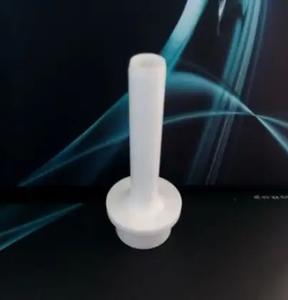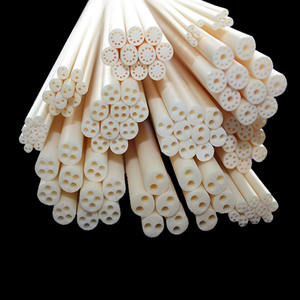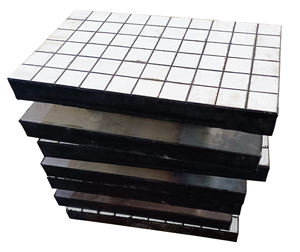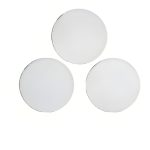Discover Premium Ceramic Products | Durability & Elegance United | Advanced Ceramics
1. Introduction
If you’ve ever worked with molten metals, high-temperature furnaces, or even premium ceramic cookware, you’ve likely encountered silicon carbide—or at least benefited from its remarkable properties. Among its many forms, the silicon carbide crucible stands out as a workhorse in metallurgy, foundries, and advanced ceramics manufacturing. But what exactly is a silicon carbide crucible, and why is it so widely trusted across industries?

In this article, we’ll break down everything you need to know about silicon carbide crucibles, compare them with alternatives like boron carbide and silicon nitride, and explore the surprising range of everyday and industrial products made from this versatile ceramic material.
2. What Is a Silicon Carbide Crucible?
A silicon carbide crucible is a container made from silicon carbide (SiC), a compound of silicon and carbon known for its exceptional hardness, thermal conductivity, and resistance to thermal shock and chemical corrosion. These crucibles are engineered to withstand temperatures exceeding 1,600°C (2,912°F), making them ideal for melting non-ferrous metals like aluminum, copper, and zinc.
Unlike traditional clay-graphite crucibles, silicon carbide crucibles offer superior durability and longer service life, especially in continuous high-heat operations. Their high thermal conductivity ensures even heating, reducing hot spots and minimizing metal contamination.
3. Key Properties of Silicon Carbide
Silicon carbide is not just tough—it’s one of the hardest materials known, second only to diamond and cubic boron nitride. Its standout features include:
- Extreme thermal stability
- High thermal conductivity (better than most metals)
- Excellent resistance to oxidation and corrosion
- Low thermal expansion, which minimizes cracking under rapid temperature changes
These traits make silicon carbide indispensable not only in crucibles but also in a wide array of industrial and consumer products.
4. Silicon Carbide vs. Boron Carbide and Silicon Nitride

When choosing high-performance ceramics, engineers often weigh silicon carbide against boron carbide and silicon nitride. So, how do they compare?
Boron carbide vs silicon carbide: Boron carbide is harder and lighter, often used in body armor and abrasive applications. However, it’s more expensive and less thermally conductive than silicon carbide, making SiC the better choice for crucibles and heat-intensive environments.
Silicon nitride, on the other hand, offers superior fracture toughness and is commonly used in bearings, cutting tools, and high-stress components. While a silicon nitride crucible factory might produce specialized labware, silicon nitride is generally less conductive and more costly than silicon carbide for bulk melting applications.
That said, custom silicon nitride heat shields, silicon nitride rings, and silicon nitride plates serve critical roles in aerospace and semiconductor industries where mechanical reliability under stress is paramount.
5. Beyond Crucibles: The Versatile World of Silicon Carbide Ceramics
Silicon carbide’s utility extends far beyond industrial crucibles. Thanks to its inertness, strength, and aesthetic appeal, it’s increasingly used in high-end ceramic products.
For example, you’ll find silicon carbide ceramic dinnerware like silicon carbide white ceramic plates, silicon carbide black ceramic plates, and even silicon carbide ceramic children’s plates. Brands offer items such as silicon carbide ceramic baking dishes, casserole dishes with lids, pie dishes, salad bowls, and ramekins—often marketed for their oven-to-table durability and sleek finish.
Holiday-themed items like silicon carbide christmas ceramic platters and silicon carbide ceramic christmas plates showcase how this material bridges function and design.

6. Industrial Components Made from Silicon Carbide
In heavy industry, silicon carbide appears in numerous engineered forms:
- RBSiC silicon carbide tile blocks for kiln linings
- Silicon carbide bricks and ceramic columns for furnace construction
- Silicon carbide burner nozzles that resist erosion in combustion systems
- Silicon carbide tubes and thermocouple protection tubes for high-temperature sensing
- Silicon carbide porous ceramic tubes used in filtration and gas diffusion
Specialized variants like silicon carbide mullite tubes or silicon carbide zirconia tubes combine SiC with other ceramics to enhance specific properties like thermal shock resistance or mechanical strength.
7. Silicon Carbide in Plumbing and Precision Tools
Less known but equally important are silicon carbide’s roles in fluid control and precision machining. Silicon carbide ceramic disc taps, quarter-turn taps, and tap glands leverage SiC’s wear resistance for long-lasting valve performance.
Meanwhile, silicon carbide grinding discs, sanding discs, and diamond grinding discs for pottery rely on SiC’s abrasive nature. Even silicon carbide piezo ceramic discs are explored in niche sensor applications, though traditional piezoelectrics like PZT remain more common.
8. Manufacturing and Market Trends
The production of high-purity silicon carbide—and related materials like high purity silicon nitride powder—fuels innovation across sectors. While silicon carbide crucibles dominate foundry use, demand is growing for advanced SiC components in electric vehicles, renewable energy systems, and semiconductor manufacturing.
Artisans and manufacturers alike are also experimenting with handcrafted silicon carbide pottery dishes and blue-white porcelain plates, blending traditional aesthetics with modern material science.
9. Conclusion
From melting metal in a foundry to serving dinner on a sleek black plate, the silicon carbide crucible is just the tip of the iceberg. Silicon carbide’s unmatched combination of thermal, mechanical, and chemical properties makes it a cornerstone of both heavy industry and premium consumer goods. Whether you’re comparing boron carbide vs silicon carbide for armor or choosing a silicon carbide ceramic casserole dish for your kitchen, one thing is clear: this remarkable ceramic continues to shape our high-temperature world—one crucible, plate, and tube at a time.
Our Website founded on October 17, 2012, is a high-tech enterprise committed to the research and development, production, processing, sales and technical services of ceramic relative materials such as What. Our products includes but not limited to Boron Carbide Ceramic Products, Boron Nitride Ceramic Products, Silicon Carbide Ceramic Products, Silicon Nitride Ceramic Products, Zirconium Dioxide Ceramic Products, etc. If you are interested, please feel free to contact us.

